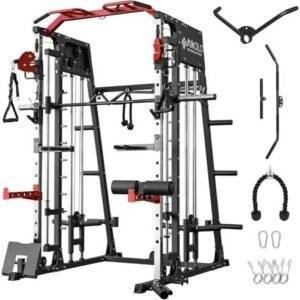Introduction to the
In an era where fitness has transcended the realms of mere activity to become a crucial aspect of holistic health, the need for tailored, effective personal training programs has never been more pronounced. For fitness professionals and enthusiasts alike, understanding the intricacies of designing a successful personal training program can spell the difference between mediocrity and excellence. A well-structured training program not only enhances physical abilities but also fosters motivation, adherence, and long-term lifestyle change.
This comprehensive guide serves as a roadmap for fitness trainers, coaches, and anyone looking to empower themselves or others through movement. Whether you are aiming to train clients of varying ages, abilities, or goals—from muscular strength and endurance to weight management and rehabilitation—you will find foundational principles, scientific underpinnings, and practical applications that are essential for creating individualized training experiences.
We will explore critical components of an effective program, including assessment techniques to gauge fitness levels, goal-setting strategies that align with personal aspirations, nutritional considerations to support training, and progression methodologies that keep clients engaged and challenged. Furthermore, we will delve into the importance of psychological factors in fitness, emphasizing how to cultivate a positive mindset that enhances performance.
By equipping yourself with the tools and knowledge outlined in this guide, you will be well-prepared to design personal training programs that not only drive results but also inspire excellence and commitment in every individual you work with. Join us as we embark on this journey to refine your skills and elevate your understanding of personal training.
Table of Contents
- Understanding Client Assessments and Goal Setting
- Structuring Program Phases for Optimal Progression
- Incorporating Varied Training Modalities for Diverse Needs
- Monitoring Progress and Adjusting Strategies for Continued Improvement
- Closing Remarks
Understanding Client Assessments and Goal Setting
One of the cornerstones of an effective personal training program lies in the thorough assessment of each client. Understanding a client’s unique background, fitness level, and specific needs is crucial. This process typically involves a multi-faceted approach that includes:
- Health history review: Gathering information about prior injuries, medical conditions, and lifestyle habits.
- Fitness assessments: Conducting functional movement screenings, strength tests, and cardiovascular evaluations.
- Goal identification: Engaging clients in discussions to uncover their personal motivations, such as weight loss, muscle gain, or improved athletic performance.
Once assessments are complete, the next step is to translate these insights into concrete goals. Effective goal setting utilizes the SMART criteria, ensuring that objectives are Specific, Measurable, Achievable, Relevant, and Time-bound. This structured approach not only provides clarity but also enhances client engagement and accountability. The following table exemplifies how to categorize goals:
| Goal Type | Example Goal | Timeframe |
|---|---|---|
| Weight Loss | Lose 10 pounds | 8 weeks |
| Strength | Deadlift 1.5x body weight | 12 weeks |
| Endurance | Run a 5K | 10 weeks |
Structuring Program Phases for Optimal Progression
To achieve optimal progression in a personal training program, it’s essential to structure the program into distinct phases. Each phase should focus on specific objectives and allow for adaptations based on the individual’s progress. A well-structured program typically consists of the following phases:
- Assessment: Analyze baseline metrics such as strength, endurance, and flexibility.
- Foundation: Establish fundamental movement patterns and ensure proper technique.
- Building: Gradually increase the intensity and volume of workouts to enhance capacity.
- Performance: Focus on sport-specific skills and higher-level conditioning.
- Recovery: Emphasize rest and regeneration to prevent burnout and injury.
Within each phase, it’s crucial to incorporate principles such as progressive overload, specificity, and variation to minimize plateaus and support continuous improvement. By using an organized timeline, you can ensure that transitions between phases occur smoothly, maintaining motivation and adherence. Below is an example of a typical program progression:
| Phase | Duration | Main Focus |
|---|---|---|
| Assessment | 1 Week | Baseline Testing |
| Foundation | 4 Weeks | Technique and Form |
| Building | 6 Weeks | Strength and Endurance |
| Performance | 6 Weeks | Sport-Specific Skills |
| Recovery | 2 Weeks | Regeneration |
Incorporating Varied Training Modalities for Diverse Needs
To create a well-rounded personal training program that meets the varied needs of clients, incorporating diverse training modalities is essential. Each modality offers unique benefits, catering to different fitness levels, goals, and preferences, ensuring that clients stay engaged and motivated. Consider integrating the following approaches into your program:
- Resistance Training: Focuses on building strength and muscle mass through free weights, machines, or bodyweight exercises.
- Cardiovascular Training: Improves endurance and heart health with activities like running, cycling, or high-intensity interval training (HIIT).
- Flexibility and Mobility Work: Enhances range of motion and reduces injury risk through dynamic and static stretching routines.
- Functional Training: Mimics daily activities to improve overall body mechanics and coordination.
- Mental Conditioning: Incorporates mindfulness and mental strategies to boost motivation and focus during workouts.
Each of these modalities addresses specific aspects of fitness, enabling trainers to craft personalized experiences for their clients. To further enhance program effectiveness, it’s worthwhile to assess and schedule training sessions strategically. A sample weekly training plan showcasing these modalities could look like this:
| Day | Training Modality | Focus Area |
|---|---|---|
| Monday | Resistance Training | Upper Body Strength |
| Tuesday | Cardiovascular Training | Endurance |
| Wednesday | Flexibility Work | Recovery and Mobility |
| Thursday | Functional Training | Core Stability |
| Friday | HIIT/Cardio | Weight Loss |
| Saturday | Mental Conditioning | Focus and Motivation |
| Sunday | Rest and Recovery | Rejuvenation |
By valuing the individual needs of clients and embracing a multifaceted approach, trainers can maximize progress and create an inclusive fitness environment that promotes sustained success.
Monitoring Progress and Adjusting Strategies for Continued Improvement
Regularly assessing your personal training program is crucial for achieving lasting results. Monitoring progress allows you to identify what works and what doesn’t, enabling you to refine your strategies for optimal outcomes. This process may include keeping track of various metrics such as:
- Body measurements: Regularly record your weight, body fat percentage, and muscle mass.
- Performance indicators: Monitor improvements in strength, endurance, flexibility, and overall fitness levels.
- Client feedback: Regularly check in to understand how your clients feel about their progress and the training experience.
Incorporating these measures into your training program will help you to make informed decisions about modifications. Use this data to adjust workout intensity, frequency, and even exercise selection. A helpful method for tracking progress is by utilizing a simple table format:
| Metric | Week 1 | Week 4 | Week 8 |
|---|---|---|---|
| Weight (lbs) | 150 | 148 | 145 |
| Muscle Mass (lbs) | 70 | 72 | 74 |
| Max Squat (lbs) | 100 | 110 | 120 |
This visual representation of progress over time can motivate both trainers and clients, highlighting areas of success and those requiring further attention. By closely monitoring progress and adjusting strategies accordingly, you create a dynamic training environment that nurtures continuous improvement.
Closing Remarks
designing an effective personal training program is both an art and a science, requiring a thoughtful amalgamation of knowledge, experience, and adaptability. Throughout this comprehensive guide, we have explored the essential components of program design, including goal setting, assessment techniques, exercise selection, periodization, and client-centric modifications. By understanding your clients’ individual needs, preferences, and limitations, you can craft tailored training experiences that not only foster physical improvements but also enhance overall well-being and motivation.
As a personal trainer, your role extends beyond merely instructing clients on exercises; you are a mentor, a motivator, and a cornerstone of their fitness journey. Continuous education and staying abreast of the latest research and trends in exercise science will empower you to refine your approach and provide exceptional value to those you serve. Remember, the success of a personal training program is measured not only by the physical transformations but also by the long-lasting relationships you build with your clients and their evolving fitness journeys.
As you embark on your journey to create effective personal training programs, keep in mind the importance of flexibility and responsiveness. Every client is unique, and their needs will evolve over time. By fostering an open line of communication and regularly reassessing progress, you can ensure that your training programs remain dynamic and impactful.
We hope this guide has equipped you with the knowledge and tools necessary to enhance your coaching practice. Empower yourself with the understanding that each program you design has the potential to transform lives, instill confidence, and inspire a lifelong commitment to health and fitness. Ultimately, your dedication to refining your training strategies will not only cultivate client success but will also elevate the professional standards of the fitness industry as a whole.




